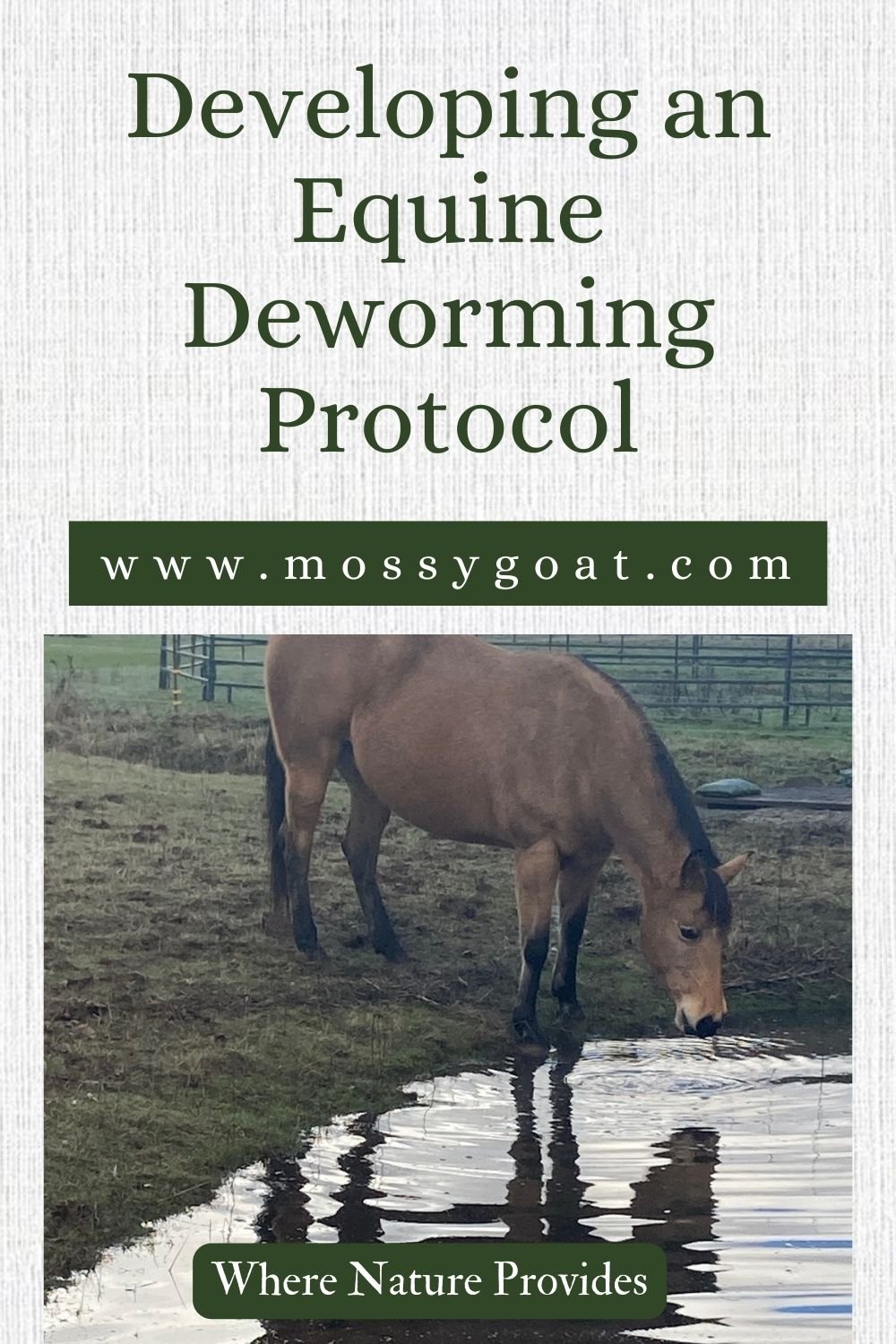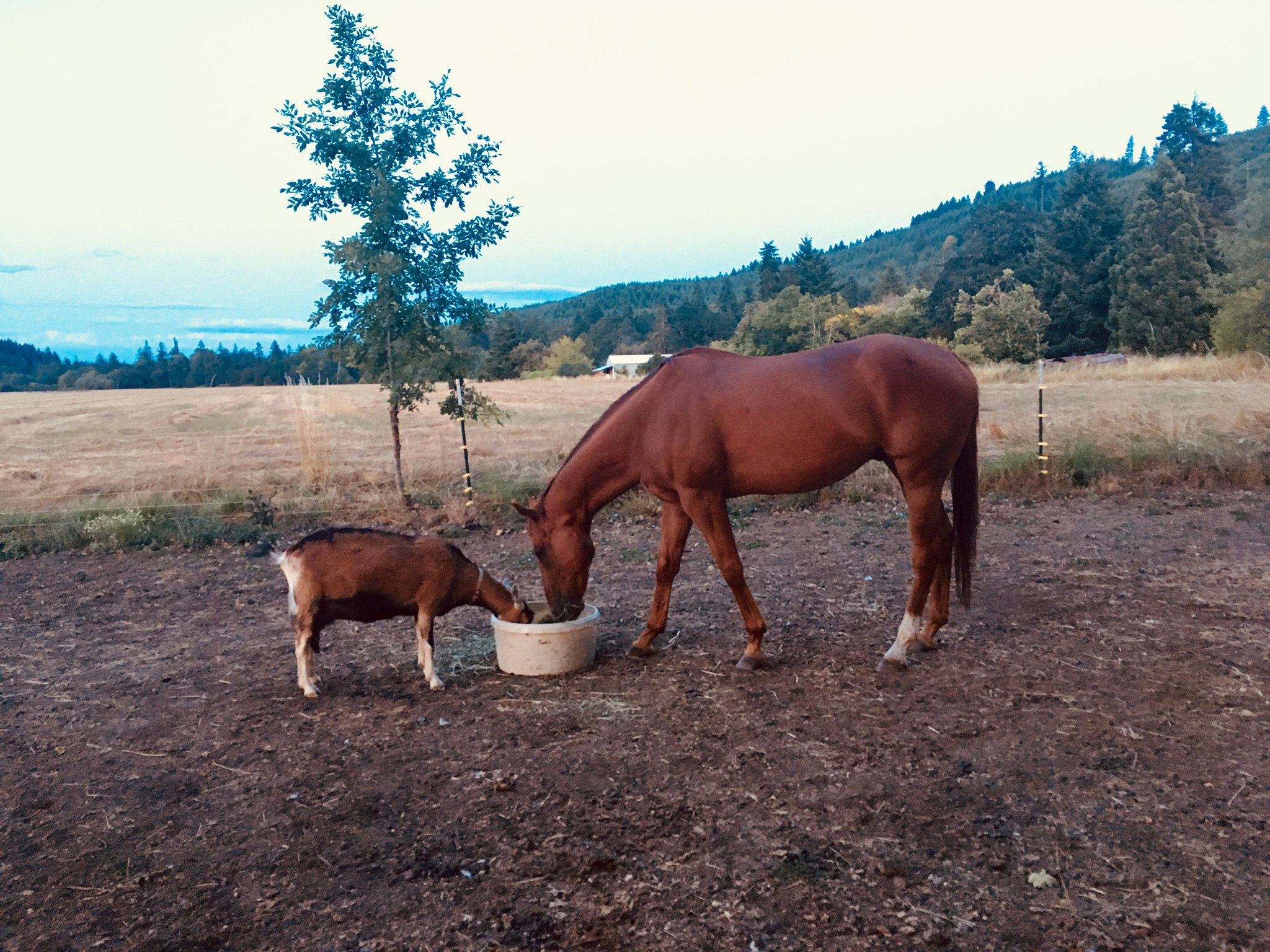Equine 201: Developing a Deworming Protocol
Dealing with worms is a part of life when you have horses. Unfortunately, there is no one single best way to handle worms in our Equine friends. But a basic understanding of the various types of parasites horses can get, the signs and symptoms, as well as different control options will give you the basis for developing an excellent equine deworming protocol. Remember as you read through this information that the goal is not to have a parasite free horse, the goal is to bring parasites and worms into a manageable level that does not harm the horse.
It is of paramount importance that you involve your veterinarian in the development of the deworming protocol with your horse. However, the information in this article can provide you with the necessary background to begin this important conversation.
Know Your Enemy
To develop the best equine deworming protocol for your homestead you must first know your enemy. Common equine worms and parasites include:
Roundworms (Ascarids). Large ascarids occur in the small intestine and can reach up to 15”. Foals are the most susceptible and breeding farms must take ascarids into account in their management practices. Slow growth, lack of energy, coughing, and nasal discharge is the typical signs of ascarids. This type of worm can also cause colic. Ascarids have developed immunity to ivermectin and moxidectin and are developing a resistance to pyrantel although fenbendazole is still effective.
Large and Small Strongyles. There are many different species of both large and small strongyles, and they are the most prevalent worm in most horse’s gastrointestinal tract. A horse can suffer from weight loss, anemia, and colic. Ivermectin and moxidectin are typically used for the control of strongyles. They are resistant to pyrantel and fenbendazole. However, small strongyles can become encysted within the horse’s tissue and can remain in this state for an extended period of time. Encysted strongyles are more problematic because large amounts of strongyles can emerge at once causing depression, fever, diarrhea, colic, and death. The only dewormer for encysted strongyles is a Panacur Powerpac, a 5-day over the counter treatment of fenbendazole. Even though there is resistance to fenbendazole as a single dose, the five-day dose does treat the encysted strongyles.
Threadworms. Neck threadworms live in the nuchal ligament of the horse that runs from the poll to the withers. They largely do not cause problems but can cause inflammation, stiffness, and mineralization of the nuchal ligament. They can be really itchy though. A horse who scratches their mane incessantly should be treated for threadworms as a precaution. Threadworms do not live in the gastrointestinal track and therefor will not show up on an equine fecal exam. Ivermectin and moxidectin are used in the control of threadworms and effort should be taken to strengthen the immune system.
Pin worms. Pin worms are relatively harmless in horses but can cause intense itching due to the females laying eggs in the perianal area of the horse. The main sign of pin worms is tail itching. An infected horse may also have bald spots at the top of their tail from itching it against fences and stalls. Pin worms are beginning to develop resistance to ivermectin and pyrantel is not entirely effective. Because of this, a benzimidazole or fenbendazole dewormer such as Anthelcide EQ should be used with severe tail itching.
Bot fly larvae. Bot fly larvae are technically not worms but they do need the horse’s gastrointestinal system to complete the life cycle. Bots are the bee-looking insects that fly around horse’s legs in late summer. They are a fly that lays eggs on the legs and shoulders of horses. When the eggs hatch after the first freeze, the larvae irritate the horse who licks and chews the affected site and ingests the larvae. The bot fly then finishes their life cycle in the horse’s gastrointestinal tract. Bot fly eggs can be seen as small yellow dots on the horse. Bot fly infestations are easy to control if you remove the boy fly eggs from the horse before they hatch. This can be done with running a pumice stone along the affected areas or by using a bot fly knife. Hot water and a sponge can also work because the hot water will loosen the glue the bot fly uses to affix the egg to the horse. Chemical control of the internal bot fly larvae involves deworming with ivermectin or moxidectin after the first freeze.
Tapeworms. Tapeworms need special mention because they do not always appear in equine fecal worm counts but are also very damaging. It may be difficult to know if your horse is infected or not before it is too late. Per Equimax, tapeworms are also the cause of “81 percent of ileocecal impaction colics and 22 percent of spasmodic colics.” Tapeworms can also cause torsion colic which is the most deadly type of colic. The only chemical wormer for tapeworms is praziquantel which is combined with ivermectin or moxidectin and found in the brands of Zimectrin Gold, Equimax, and Quest Plus. Unfortunately, Zimectrin Gold is known for side effects and problems including burning of the mouth. This has been observed at Mossygoat Farm. Because of this, only Equimax or Quest Plus should be used. All horses should be dewormed for tapeworms at least once a year.
Deworming Protocols
As you can see from the above information, no single class of dewormer treats all classes of worms. Because of this, traditionally horses were dewormed once every two months despite need. Some horse owners began to stretch this time period to once every three months. Ivermectin is generally used twice a year with pyrantel and fenbendazole/benzimidazole rotated between the ivermectin doses. These different classes of dewormers are rotated so that as you blindly deworm you can be sure to kill all worm types. This practice is still used heavily. However, this isn’t the best practice, and the worms are developing resistance to every class of dewormer. The general resistances are listed above.
Why would a horse owner choose a rotation wormer schedule? It is easy, does not require regular fecal counts, and you can ensure your horse’s worm problem is being taken care of. The only downside of this protocol is over deworming is causing the worms to become resistant.
The answer to the problem of over deworming is to deworm based on the findings of the equine fecal egg count. A veterinarian can help you with this or you can take your own egg count if you have a high enough powered microscope. Simply, someone counts the eggs in the feces of a given sample size. Horses are categorized as low, medium, or high shedders based on the number of worm eggs found. An individualized deworming protocol can then be crafted. This is not a perfect solution, however. Neck threadworms, pin worms, and tapeworms do not show up on fecal counts. While the presence of threadworms and pin worms can be diagnosed through symptoms, tapeworms cannot. All horses should be dosed with an ivermectin/praziquantel wormer at least once a year, preferably just after the first frost to additionally kill bot fly larvae as well. In areas with a high prevalence of tapeworms, deworming twice a year may be needed.
Wormwood Plant, a common herb used in the defense of equine worms. Not to be used in pregnant mares.
Herbal dewormers can also be used in place of chemical dewormers. Wormwood, garlic, and black walnut are traditionally herbs for deworming. Rather than killing the worms, these herbs make a hostile environment for the worms in the first place. They are best used after an initial flush using the Panacur Powerpac or a dose ivermectin/praziquantel depending on the situation. Molly’s Herbal Wormer is the formula successfully used at Mossygoat Farm. It should be noted that diatomaceous earth is not effective in equines. When using herbal dewormer, it is important to continue fecal egg counts, especially if signs or symptoms of worms are observed. A yearly dose of ivermectin/praziquantel may also be needed along with the herbal wormer.
Daily feed through dewormer is available at most feed stores. The most popular brand is Strongid C2X which is a daily low dose of pyrantel aimed at controlling large and small strongyles, pin worms, and ascarids. Many veterinarians do not recommend this protocol due to developing worm resistance although some horse owners continue to use it due to ease. The veterinarian who services Mossygoat Farm says simply, “It’s useless.” Horses who utilize a daily feed through dewormer will still have to dewormed with Ivermectin twice a year and preferably one ivermectin dose combined with praziquantel.
Bart the Barrister and Tulip the full-size alpine goat share a meal off the ground. Yes, he’s that tall.
Prevention and Control Practices
Using a chemical or dewormer is not your only line of defense in controlling equine parasites. Good practices such as cleaning stalls daily, clearing manure from pastures, rotation grazing, multi-species grazing, and not feeding hay or grain on the ground will help prevent problems. Environmental controls are as important as chemical and herbal controls.
Good luck everyone in controlling equine worms and parasites on your homestead. If you have any further questions, ask your veterinarian or email us. We love hearing from our readers!
Kimberly Fulmer has over 30 years of experience in the equine world and is a former professional. She is not a veterinarian, and this should not be taken as veterinary advice. Kimberly has competed in combined training, jumpers, and dressage. She has specialized in the training and care of English sport horses. This advice is in alignment with current veterinarian recommendations but please consult your veterinarian before starting your horse on any deworming protocol.
Happy holistic horsemanship everyone!




